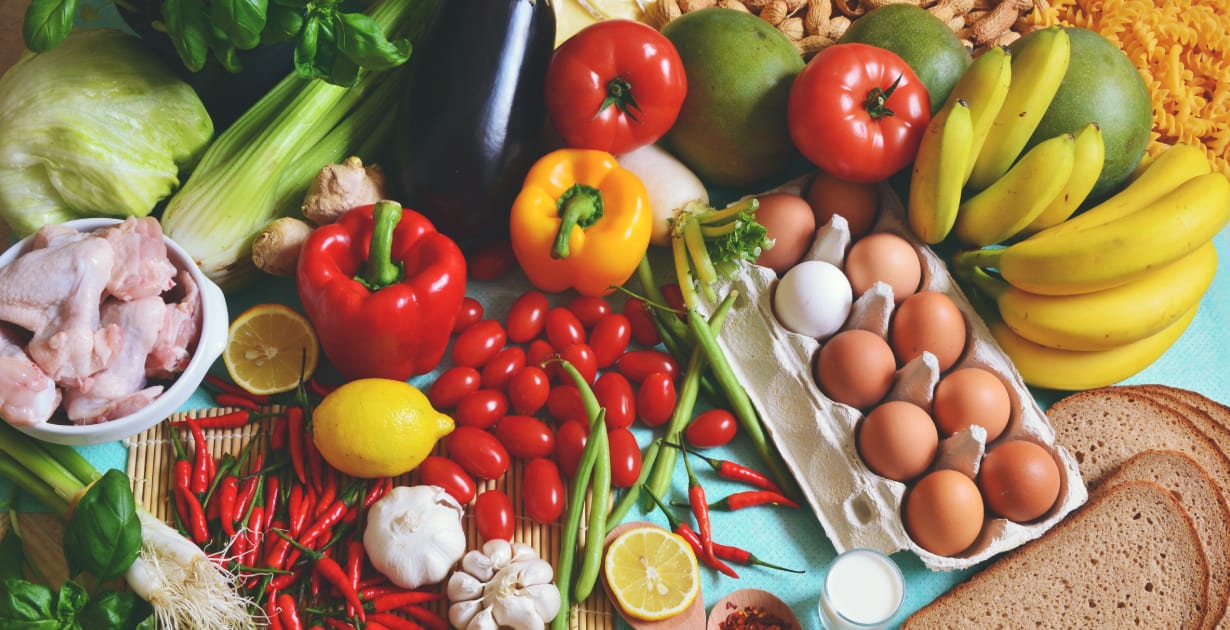Table Of Contents
When you think about eating habits for college students, what comes to mind? Pizza and fast food probably top that list. And while both are popular on campus and provide quick and cheap options for hungry students, they’re not the healthiest meals. On-campus dining services can be an invaluable resource for any student, especially those living in a dorm or an apartment with limited meal options outside school walls. Most colleges offer healthy meal plans and affordable prices to help students get more nutrition from their food, but it’s hardly ever enough. If you’re looking to eat healthy cheap food while at school, read on for helpful tips on on-campus eating that’ll give you the best bang for your buck without compromising your principles.
READ ALSO: Edit my paper service
Cheap healthy food for college students on a budget
Healthy food is an essential part of a balanced diet and one of the hardest to come by when you’re a student on a budget. However, it doesn’t mean your meals have to be unhealthy! Numerous recipes don’t require many ingredients, are easy to make, and are also cheap and healthy. If you’re interested in learning more about affordable healthy food for college students, keep reading!
Healthy food options for college students: What to do when and where
Healthy on-campus dining options
There are a few ways to eat healthy on campus, but the best options all start with communication. Primarily, find out what on-campus dining services are available and how they work. Every school is different and may offer meal plans, discounts on certain foods, or even vegan/vegetarian options. If you have any dietary restrictions, it’s best to let your school know as soon as possible. Some schools will accommodate students with dietary needs, but others may not. It’s always better to be safe than sorry concerning your health. If you can, try to eat at the school cafeteria at least once a week. It’s a great way to get more nutritious foods without spending hours daily preparing meals. Most cafeterias offer healthy food options for college students, such as salads, tofu, and fresh fruit.
Watch the portions
One way to get more vegetables on your plate is to watch the portions that come with your meals. Most campus dining services offer generous helpings of vegetables, but they’re often served with huge quantities of other foods. If you want to eat more healthfully, it’s a good idea to take a smaller portion of the main dish and add more veggies. Depending on where you’re eating, you might be able to ask for an “à la carte” menu where you can select what goes on your plate. If you’re on a meal plan, it’s a good idea to check the fine print. Some schools may restrict what can be taken from the dining hall. Some colleges even offer online tools to help students track their nutritional intake. It’s a great way to stay on top of what you’re eating and make sure you’re getting enough of everything you need.
If you find your college’s online tools inadequate, consult CustomWritings, a fast essay writing service, to help you with your papers. They can provide you with a well-researched and professionally written paper on healthy eating habits. The company has been in business for over 20 years, assisting thousands of students in that time. Their writers are highly qualified and can write on any topic or academic level. Moreover, their urgent papers are written from scratch, avoiding any cases of plagiarism. Visit their website and learn more.
Pack a Lunch
If you want to eat healthily but have little say in what food is served at your campus, try packing a lunch. You can save a lot of money by bringing your food while still getting the nutrients you need. Most schools have strict policies regarding what you can bring into the cafeteria. Some won’t even let you bring water bottles into the building. Remember that you’ll have to eat lunch inside your room if you don’t have a table or patio. If you’re living in a dorm or close quarters with other students, leaving the food out of sight might be best. You don’t want to get complaints or draw unwanted attention from insects. Alternatively, you can use open spaces to eat and avoid trouble with administrators and college security. Some dorms have laundry and entertainment areas that students can use for eating while maintaining cleanliness.
Fresh food is worth the wait
If you’re really pressed for time, consider eating your vegetables raw. It might sound crazy, but eating vegetables without cooking can increase their nutritional value. That’s because some vitamins and minerals can break down when subjected to heat. Suppose you have the time to cook your vegetables; go ahead. Remember that you should eat your veggies regardless of how you cook them, but if you’re pressed for time, eating them raw is an option. While this may be an easy healthy food for college students, ensure that they’re well-cleaned and sourced from trusted sources. The CDC estimates that leafy greens are responsible for most cases of foodborne diseases, including E. coli O157, norovirus, and Salmonella, among other germs and illnesses.
Eat seasonally
Eating foods that are in season will help you save money, not to mention avoid pesticides and preservatives. Most schools are close to a decent-sized city, so you can always find fresh fruits and vegetables. But if you eat seasonally, you can avoid paying for out-of-season food that’s more expensive. Furthermore, eating seasonally in an area with a mild climate will help you avoid buying summer produce when fall is coming.
Don’t be afraid to ask for what you want
If you have some healthy food ideas or there are certain healthy foods you want to eat, don’t be afraid to ask for them. Some campuses have chefs that can prepare special meals for students. Let the dining hall staff know if you have a food allergy or dietary restriction. They should be able to adjust and give you what you need. Always remember that they’re humans and your welfare is one of their responsibilities.
Don’t forget your beans
Beans and other legumes can be a healthy addition to any meal. They provide plenty of fiber, carbohydrates, and protein, making them the perfect food for any eater. Some campuses offer bean bars where you can fill your plate with beans and vegetables. Other colleges might offer seasoned beans alongside other dishes and alternatives. If you eat meat, beans are a great way to get more protein and iron into your diet. If you’re a vegetarian, they can help you get enough protein without eating large quantities of soy.
Conclusion
Eating healthy on campus can be challenging, especially with the variety of available options on a budget. If you’re serious about eating healthier, try to make the most of your school’s dining services and bring your food when possible. Eating healthy while in college is certainly possible, but it takes a bit more effort than when you were at home with your parents. There are numerous options for healthy food for college students, but you must actively search for them.






